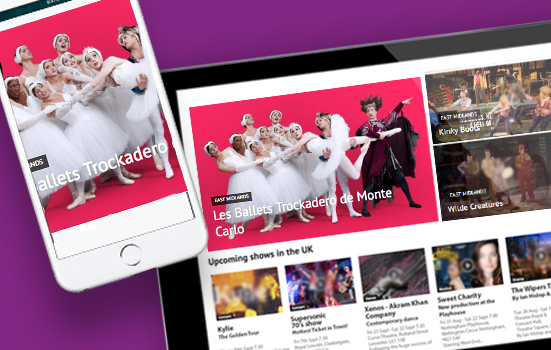
Reaching the iPhone generation
Arts organisations could be doing a lot to tempt potential audiences with a taster of their work. Steve Wallace explains how video could take more advantage of society’s growing visual literacy.
Although it’s a challenge for overstretched marketing departments to think ‘outside the box’ when they have daily sales targets to meet, those that do always reap the rewards. Video is one of the tools they are increasingly using to tempt potential audiences to try something that they’ve never tried before. It’s the perfect medium, giving the viewer a taster of what’s in store and taking some of the risk out of buying tickets for new work.
It’s also perfect for reaching those elusive but highly prized new audiences. Arts organisations that put all their marketing efforts into database marketing but fail to look beyond their own lists to capture potential attenders who are looking around for a ‘a good night out’ are in danger of missing the bigger picture.
Google rankings
In an increasingly visually literate society, where short videos and online distribution are now universally understood – and access to them is in everyone’s pocket – there’s every reason for the arts sector to ride the crest of the wave. First and foremost, the arts are rich in highly visual content and engaging stories that make great video. But video materials aren’t restricted to the stage. The roles of the technical crew, designers, directors and curators in a production or an exhibition can all be part of captivating video content that can be the catalyst for a visit to arts and cultural venues.
When it comes to online distribution, things are a bit trickier. If the video content can only be found by people exploring an arts organisation’s own website, then that’s not doing much to attract new and more diverse audiences.
Anyone browsing online for entertainment or arts experiences is likely to find this scattergun approach to be an unsatisfactory one. It is unlikely to deliver would-be attenders to the videos of live arts events. As big budget communication companies pay big money to help them climb to the top of the Google rankings, anyone searching for topics such as ‘entertainment‘, ‘shows’ or ‘drama’ is increasingly presented with links to Netflix, cinemas, drama channels and iPlayer. The live arts rarely show up in a search unless the user includes a specific venue name.
It’s all down to search engine optimisation, which on a regional or national level is not cheap. However large or prestigious a theatre or gallery, they seldom have the budget to challenge the dominance of film and TV companies, and it’s a whole lot worse for smaller organisations with very limited marketing capacity.
Critical mass
Critical mass is what can break through this barrier. What the live arts need is a hub that will draw the casual seeker of live entertainment – an online channel that can pull together video from across the spectrum of arts activity, giving potential audiences a glimpse of the options open to them across art forms, across venues, across regions and nationally.
A combined approach like this could fulfill a range of different marketing objectives for attracting and engaging new audiences. Drawing together content from across the arts would be a cost-effective way of reaching a far greater audience than any one theatre could on its own, and the live arts could start to compete with film and TV on an equal footing.
A free solution
To fill this gap, a new website focusing on short form video will soon be delivering a content-led Video on Demand channel which will see theatres, music venues, stadiums, galleries, museums and production companies combining to attract their audiences by aggregating topical and unique video content. Through widespread marketing, significant use of key metadata and extensive cross-promotion, this initiative is preparing to drive a large and valuable audience to their video content.
Called ARTSPOD, and created by Off the Shelf, the entire service is free – and will continue to be free – for all cultural venues, with no hidden costs, enabling venues themselves to become the broadcasters of their unique content to attract audiences. All they have to do is upload their videos, with no need for content management beyond that. Events are automatically removed when they have finished.
Links with Sky Arts, regional TV stations, tourism organisations and Andrew Lloyd Webber’s Really Useful Group, together with an energetic social media presence, will promote the platform and constantly drive the public back to the website. A regular arts TV programme will provide a showcase for the events and shows featured on the website. This will not only give TV audiences information on upcoming events, but also push them to go to the ARTSPOD website to explore more of its content. Doing this will increase the visibility of arts organisations’ short videos, drive traffic to their websites, and most important of all, improve the chances that audiences will take the risk of trying something new and different in the arts. What’s not to like?
Steve Wallace is the creator of ARTSPOD and Director of Off the Shelf.
ARTSPOD will be launched on 10th October 2018. To find out more click here, or contact [email protected] for more details.
This is a sponsored article that has been written and paid for by Off the Shelf.

Join the Discussion
You must be logged in to post a comment.